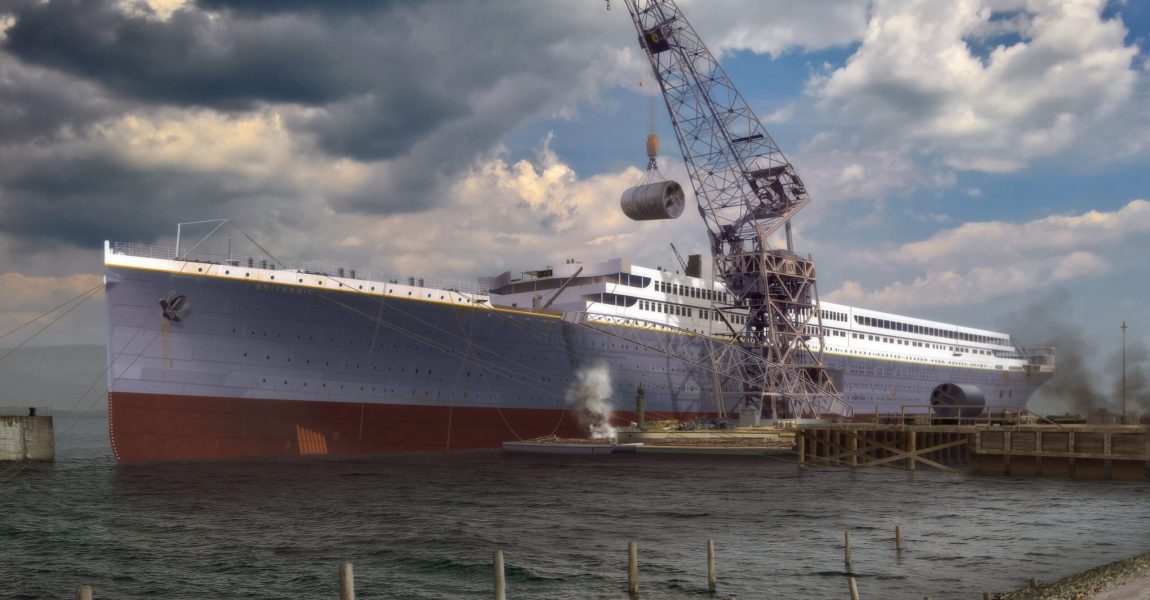Constructing Britannic The Most Luxurious Liner Yet A Casualty of War
Following the Titanic tragedy, several notable modifications were made during the construction of Britannic to increase safety measures. More lifeboats were also added, including one open and one collapsible lifeboat, making the total number of lifeboats equal to 55 in comparison to Titanic’s 20 lifeboats. Five gantry Davits along with six Wellin type davits and two Welin type davits on her poop deck were added to the Britannic.
She was intended to have eight gantry davits just like on the Titanic and Olympic. Another safety revision included Britannic having an increased number of watertight compartments totalling 16. A new bulkhead was added in the electric engine room, and five bulkheads were extended up from E deck to B deck with some being extended right up to the bridge. Britannic’s watertight double skin ran the length of the boiler room to the engine room, and the length of the ship’s beam was increased to 94 feet in order to allow room for the double hull.
The width of the ship was also increased for the same reason. Another significant difference included a higher rated horsepower which was 18,000 horsepower 3.000kw, in comparison to the two sister ships which had 16.000 horsepower 12.000kw.
In addition to the design changes to improve safety, there were several structural changes intended to be made to the Britannic with the intention of her being even more opulent than her sister ships. First Class would have been given a larger À La Carte Restaurant and a new reception room on B deck, where the utmost elite in society could dine. A play room was to be added to First Class where children could play.
Unlike on the Titanic or the Olympic, children could use one of the Palm Courts. On the Britannic, there would also have been a lady’s hair salon in addition to the barber shop. New sitting rooms were to have been added as well as the addition of many more First Class private bathrooms and washrooms. The swimming baths would have seen more of an Art Deco design in order to keep up with the luxurious German liners of the day, unlike the basic decor of the Titanic and Olympic swimming baths. Britannic was also going to have a self playing Welte-Mignon organ added to her grand staircase. The organ was made but was never installed on the Britannic. It can still be seen today on exhibit at the Museum für Musikautomaten Seewen, Solothurn Switzerland. The Britannic also had a shelter deck added to her stern. In addition, Second Class, like First Class, would have been given their own gymnasium. Third Class passengers would also have been given new entrances.
Sadly the Britannic never saw any of the luxurious design upgrades and never saw a day of service as a passenger liner. Instead, she was transformed into a hospital ship. Many modifications were required including the public rooms on the upper decks being converted into wards for the wounded. Lower on the ship, the large First Class dining room and the reception rooms became operating theaters and main wards. The medical personnel would occupy the B-deck cabins, while the medical orderlies and the less critically wounded patients would be accommodated on the lower decks.
From the evidence shown by some surviving photos, we know that the partially enclosed First Class promenade was used as patient wards as well. In order to be recognised as a hospital ship, the Britannic was painted white with a green stripe down the side of the ship broken by three red crosses. Green lights were also fitted to the side so she could be easily determined as a hospital ship at night, and she was also fitted with two big red crosses on both sides of her boat deck that light up at night. The Britannic could carry 3,309 wounded soldiers.


